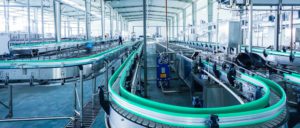Co-authored with:

Craig Hayman, CEO, AVEVA, joined AVEVA in February 2018 as Chief Executive Officer. Previously he was Chief Operating Officer at PTC, where he had responsibility for engineering, marketing, and sales of the ThingWorx® platform, as well as computer aided design, and product lifecycle management solutions. Craig also served as President of the Solutions Group at PTC, where he led a resurgence in core solutions businesses, while driving sales of the company’s IoT technology platform.
The COVID-19 pandemic rewrote the rules of how industries operate, how teams collaborate and how companies drive value. Leading companies pivoted to digitally-enabled operations, often in the cloud, to continue production, ensure safety and maximize value.
In power, ENEL in Italy shifted its team to work from home overnight, using cloud-based tools and in manufacturing, Danone in Asia collaborated with AVEVA and Schneider Electric on the DANMES digital operating vision that is increasing transparency, quality and efficiency of its specialist nutrition operations, and providing a resilient operating model that supports business continuity.
These are just two examples: across the world, industries are fast-forwarding their digitalization strategies to remain agile and safeguard the health of their teams. In doing so, they have accelerated the Next Generation Industries and positioned themselves to succeed in the coming digital renaissance.
Digitizing today, transforming tomorrow
Over the last six months, we have worked with diverse organizations, helping them to safeguard, maintain and extend business efficiency and performance in extraordinary circumstances.
Leveraging the power of the Cloud, our broad and deep data foundation, the IIoT, digital twin, and artificial intelligence-infused analytics, we have improved our customers’ resilience, speed, and agility while safeguarding workers during the pandemic, and maintaining rigorous health, safety, security and environmental requirements.
If we look at smart cities like Seattle, or our Smart Factories like Lexington or Batam sites, our combined technologies have created new, more efficient operating paradigms that are reshaping operations for the better.
Resiliency in 2021
As we look to the coming year, there are four key principles of success:
- Connect your workers using interactive data and analytics – Connectivity between field assets and remote teams has enabled the use of real-time information, analysis and optimization. With many companies electing to remain working from home for the medium term, connected worker technology is rapidly becoming industry’s new gold standard. When overlaid with AI-infused analytics that can predict and prescribe efficient, more sustainable, operating procedures, we are at the dawn of a new industrial operating era that is more energy efficient, sustainable and poses fewer manpower risks. As customers like Veolia prove that operations can be safer and more efficient when working in the cloud, the industrial best practice is moving in step.
- Simulate to innovate – As supply chains have been disrupted across the globe, planning has become a complex exercise. Using digital simulations enables teams quickly to model and plan for the most efficient scenario, using big data combined with analytics that define your best opportunity. This has enabled us to make fast and effective supply chain decisions while also observing that tasks we thought could only be successfully implemented in person can now be performed and achieved digitally.
- Drive efficiency with an AI-enabled Digital Twin – Digital Twins are virtual models of the engineering/design and operations phases of an asset. They enable engineers to model and test asset behavior, optimizing planning and operations to maximize efficiency, sustainability and to avoid costly unplanned operations. During the pandemic, optimization moved to the next level, with increased real-time data and tailoring of Digital Twins, enabling companies to run safely with fewer personnel on site and supporting more rapid decision-making. For example, Sanning Chemical Company during a recent upgrade project was able to achieve a faster time to operation using OTS (Operator Training Simulators) so operators training could take place remotely, even during lockdown, using digital twins.
- Cloud Everywhere – Above all, the pandemic accelerated the shift to Cloud, as access to remote data and analytics is key to unifying disparate data and teams, enabling efficient decisions. Digital is the new industrial standard – as BP showed, working with us to optimize the entire chemicals value chain, enabling their teams to accelerate decision making from weeks to hours, while enhancing energy-efficiency and performance.
Partnering for industries’ renaissance 4.0
The world’s leading companies are rapidly evolving their digital strategies, to operate more efficiently, to improve agility, and to drive down CAPEX and increase sustainability. Six months of disruption have also been six months of unprecedented innovation and we are excited by the pace of new thinking that the pandemic stimulated across diverse sectors.
Today’s digital agility and resiliency have accelerated Next Generation Industries in many and diverse ways. At AVEVA and Schneider Electric we’re working side-by-side, ready to help you to realize success.
Learn more about how digitization can enable you to take advantage of the next generation of industrial automation.
Infographic – Fast Forward to Now: How Resilience & Agility are Driving Next Gen Industries – Today’s Four Innovation Drivers



